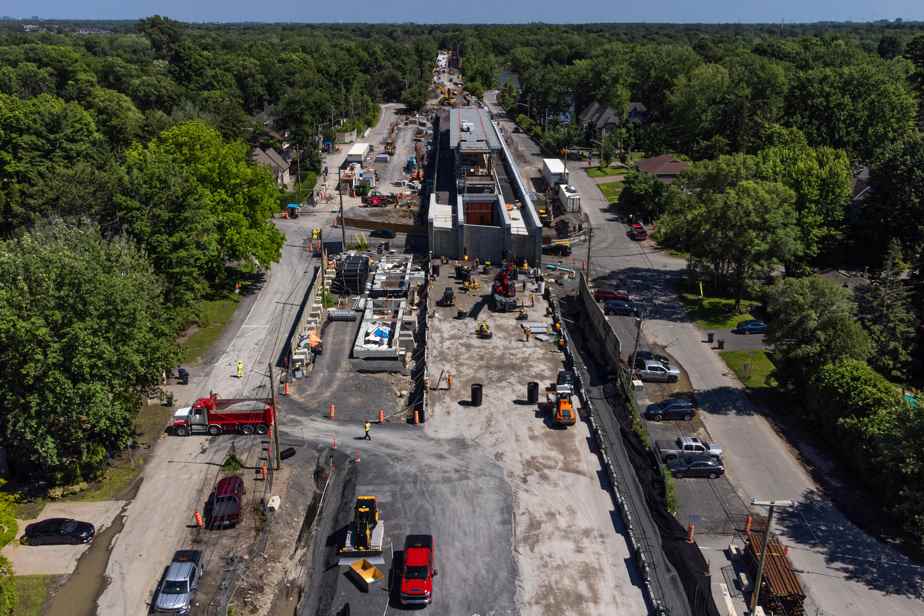On the eve of the general elections in Quebec, 24 of the 251 promises of the Legault government relate to the environment. The Coalition avenir Québec (CAQ) claims to be able to meet its environmental commitments, notably citing the Réseau express métropolitain (REM) as a solution to achieve its carbon neutrality target by 2050. However, the REM itself is not carbon neutral.
Posted at 2:00 p.m.
The Caisse de dépôt et placement du Québec (CDPQ) announced in April 2016 an ambitious project for a public transport network in Quebec, the REM. It should be remembered that this sustainable mobility project primarily has an objective of economic profitability, since the Caisse must respect its commitments to savers. If it is an economic success, how can we ensure that the REM is also a “green” project?
In 2017, the CDPQ hired the engineering firm CIMA+/Hatch, estimating that the project could avoid more than 680 kilotonnes of CO equivalents2 (CO2e) for 25 years of operation, while the construction phase would generate 87 kilotonnes of CO2e. In particular, the study assumes that the train cars will emit “no greenhouse gases”.
Electric or not, the energy used nevertheless involves greenhouse gas (GHG) emissions. Hydro-Québec considers the rate of 34.5 g CO2e/kWh to determine the carbon footprint of a product’s energy consumption, i.e. 15 kilotonnes of CO2e per year if the 200 REM cars circulate 20 hours a day all year round. By adding the 4,563 segments serving as support for the REM rail line, the REM will then become carbon neutral in 2042, without compensation, if it enters service in 2022.
The official study also neglects the impacts of the extraction of raw materials, site operations, maintenance and demolition of the project.
The BAPE made the same observation in its report, noting simply that “the portrait drawn up by the proponent, with respect to GHGs, is incomplete. [et] additional analyzes should be carried out in order to […] to paint a clear picture of the direct and indirect impacts, both positive and negative, during the construction and operation phase”. The REM will therefore probably not be carbon neutral in 25 years of activity. The 250,000 trees promised as compensation for GHG emissions will probably not be enough. It should be noted that approximately 1,200,000 trees would be needed just to compensate for the construction phase and the concrete of the segments.
The project is historic, but only partially meets the objectives of sustainable development. It will contribute to reducing Quebec’s emissions provided that we turn a blind eye to certain aspects. Important lessons will have to be learned. First, an environmental scan can be easily manipulated. Next, the credibility of such an analysis requires the mandate of specialized, transparent and independent bodies. Finally, limiting oneself to considering electric transport or the electrification of an industry as a “green” project is too easy a shortcut.
Another major infrastructure project that does not pass the criteria for an ecological transition is the third link between Lévis and Quebec. Let’s hope the CAQ doesn’t try to pass it off as a green project, and chooses instead to focus on developing public transport and providing incentives for active mobility.
* Co-signatories, students in sustainable development: Phaidra Duchastel-Vassaramva, Simon Boisvert-Legault and Rida Zerrok

